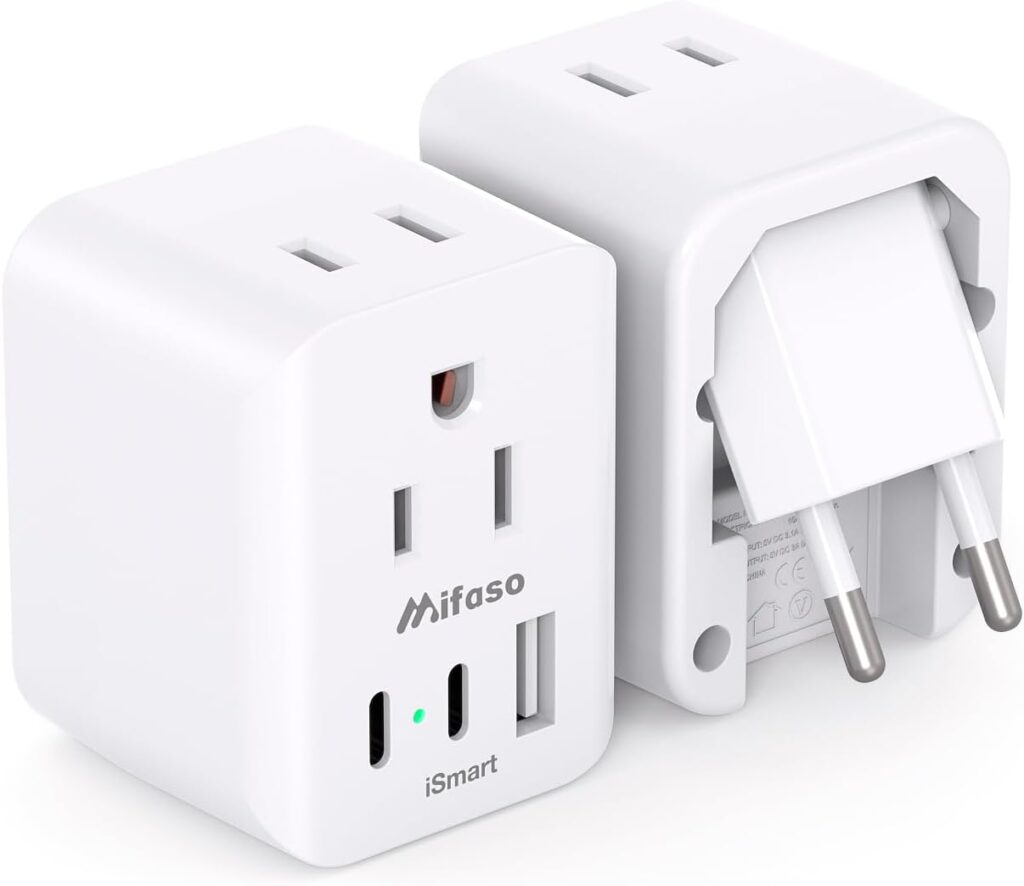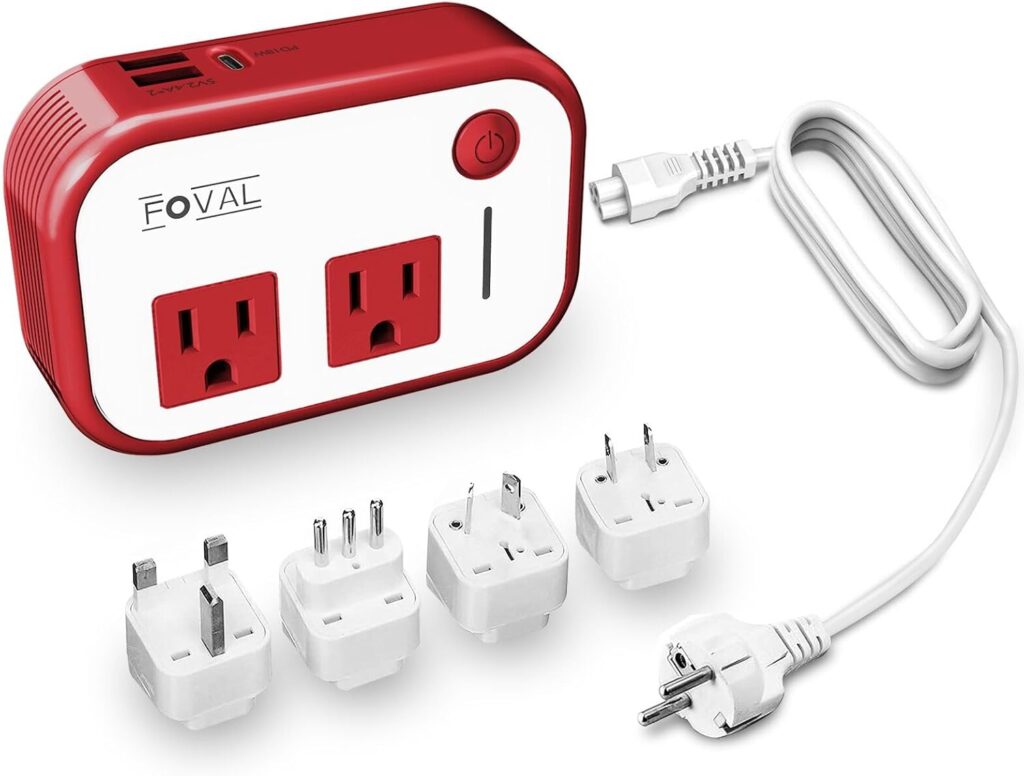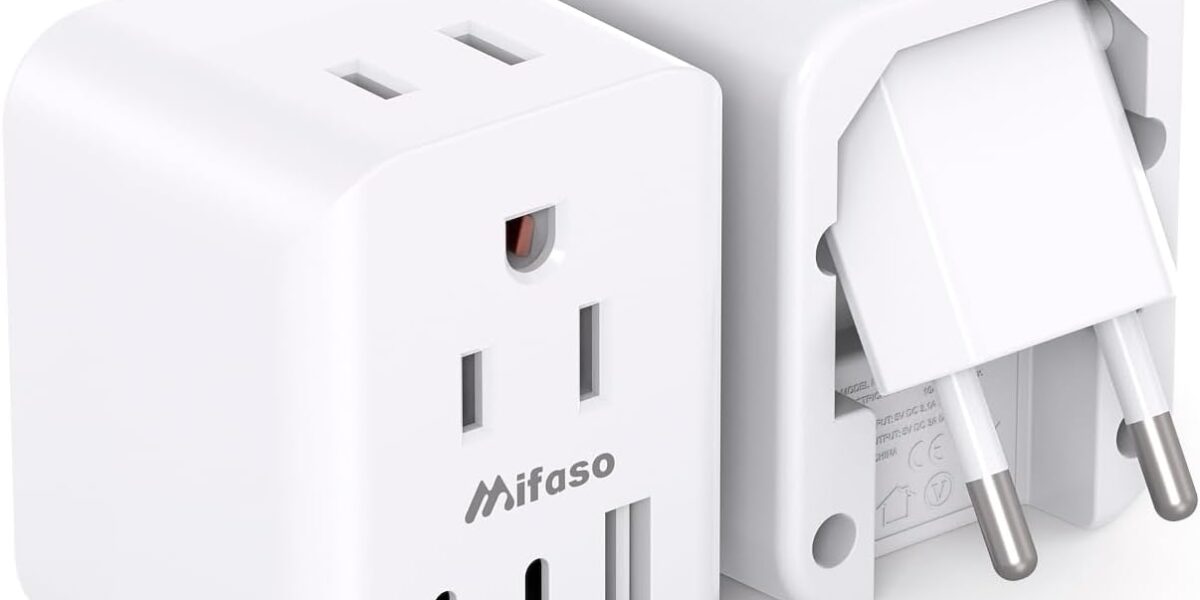When preparing for a trip to Europe, travelers often focus on packing the perfect outfits, booking dreamy hotels, and planning must-see excursions. But one often-overlooked detail can make or break your trip: power adapters and converters.
 Whether you’re heading to Paris, Rome, or the Greek Isles, knowing how to charge your devices safely and efficiently is essential. Here’s what you need to know before plugging in abroad.
Whether you’re heading to Paris, Rome, or the Greek Isles, knowing how to charge your devices safely and efficiently is essential. Here’s what you need to know before plugging in abroad.
—
⚡ Why You Need a Power Adapter in Europe
Europe uses a different plug shape and voltage system than the United States. Most European countries operate on 220-240 volts and use Type C, E, or F plugs, which have round prongs. In contrast, the U.S. runs on 110-120 volts and uses flat-pronged Type A and B plugs.
Bottom line: Your American devices won’t physically fit into European outlets without an adapter. That’s where this highly-rated universal adapter comes in:
👉 Shop This Power Adapter on Amazon
—

✅ The Best Travel Adapter for Europe (and Beyond)
After testing several models, this compact international travel adapter has become my go-to recommendation for clients and personal use. Here’s why:
Works in over 150 countries, including all of Europe
Multiple USB ports, so you can charge your phone, tablet, and camera all at once
Compact and lightweight—perfect for tossing into your carry-on
Built-in surge protection, keeping your electronics safe from sketchy hotel wiring
It’s not just for Europe either—you’ll want to pack this for any future adventures in Asia, Australia, or South America.
—
⚠️ The Big Mistake: Don’t Rely on a Power Converter for Hair Tool
One of the most common travel mistakes? Assuming a power converter will handle everything, including your hair dryer or straightener.

I tested this power converter model, and while it claimed to convert voltage from 220V to 110V, it completely failed when I tried to use a blow dryer. Not only did the dryer not work—it nearly fried the converter itself.
Here’s why: Many travel converters can’t handle high-heat appliances like blow dryers, curling irons, or coffee makers. These devices pull too much wattage for lightweight converters to manage.
—
🔌 Know the Difference: Adapter vs. Converter
To keep it simple:
A power adapter lets your plug fit into a foreign outlet.
A power converter attempts to change the voltage from 220V to 110V.
You usually only need a converter for older electronics or single-voltage appliances.
However, most modern devices—like laptops, cameras, and especially cell phone chargers—are already rated for 110V to 240V. You can check this by looking at the tiny print on your charger. If it says something like:
> Input: 100–240V ~ 50/60Hz
Then you’re good to go with just an adapter—no converter needed!
—
🧳 Travel Smart, Stay Powered
Before your next European getaway, double-check your essentials list and toss in a reliable travel adapter. Don’t risk frying your devices—or worse, being stuck with a dead phone and no way to charge it.
This universal adapter has made travel so much easier for me and my clients at Sandy Caye Adventures. It’s simple, safe, and smart—exactly what every traveler needs.
—
📌 Final Travel Tip
Leave the high-voltage hair tools at home and either buy a dual-voltage travel hair dryer or plan to go heat-free for a few days. Your electronics—and your suitcase—will thank you.
Ready to plan your European adventure? Let Sandy Caye Adventures help you travel smarter, not harder.
#TravelTips #EuropeTravel #PowerAdapterForEurope #WhatToPackForEurope #InternationalTravelEssentials #VoltageConverter #DualVoltage #TravelPackingList #SandyCayeAdventures #SmartTravel #TravelTech #EuropeTripPlanning

